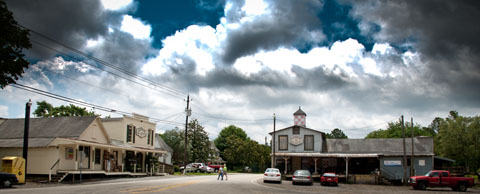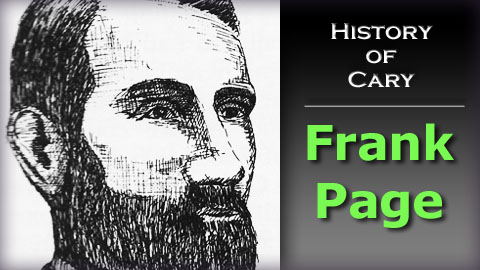History: Desegregating Cary
Author Peggy Van Scoyoc and Gwen Mattews at "Desegregating Cary" event
All photos by Brooke Meyer
Cary, NC – The turbulent Civil Rights Era was experienced right here in the Town of Cary, but many of us don’t know about it.
Real Life Stories
Peggy Van Scoyoc, Cary’s oral historian, recently published a book titled “Desegregating Cary” to tell real life stories about people that lived through these times in Cary. In her book, Peggy records the oral histories of 43 people.
Five of those individuals spoke as part of a panel discussion on Monday, October 23 at the Page-Walker Arts and History Center.
Charlie Adams speaks of his father's commitment to desegregation
Charlie Adams is the son of Henry Adams, the original pharmacist and owner of the drugstore that later become Ashworth Pharmacy. Charlie remembers those times when his father was not popular in town.
Henry served on both the local Cary School Board and the Wake County School System’s board.
Henry knew in the early 1960’s that desegregation was coming and firmly believed in it. He thought there should be a plan and it should begin with his own town. He became one of the chief architects of that plan.
At times friends shunned him and threats were made. Mr. Adams stuck to his beliefs and Cary became one of the first towns in North Carolina to institute such a plan – and do so peacefully and voluntarily. One of Cary’s elementary schools, Adams Elementary, is named so in his honor.
In 1963, Cary High School was the first formerly “all white” school to allow African-Americans to voluntarily enroll, and 6 girls did so. The plan went smoothly, and became a model for other schools in Wake County and then spread to other areas in North Carolina. Other areas in the south called upon Cary to help with their own plans. Imagine – Cary only had 5300 residents then and was a civil rights model for the country!
Other members of Monday night’s panel included several of those early students.
Lucille Evan Cotten was one of 6 students to integrate Cary High School in 1963
The Six Young Women Profiled
Lucille Evans Cotten and Gwen Matthews were two of those first six students. They spoke about what they endured as they attended Cary High School at a time when few wanted them there. Gwen later went on to become the first black woman to graduate from Meredith College in 1971.
Debrah Matthews Wright was one of the first black students at Swift Creek Elementary in 1965
Gwen’s younger sister, Deborah Matthews Wright was one of four black students to attend Swift Creek Elementary School in 1965. Deborah told of her bus rides with all ages riding the same bus – elementary schoolers along with high schoolers – and how she had to stand in the bus and endure ridicule on these rides for three years.
Carolyn Rogers was one of the first black school teachers in Cary in 1969.
Carolyn Rogers was one of three black teachers hired in 1969 to teach the predominantly white school children. She experienced an uphill battle not only with the students, but with the parents and faculty. There was a predominant opinion that she was not qualified to teach the children.
The Raleigh City School System merged with the Wake County School System in 1976 to become the Wake County Public School System (WCPSS) that we know today.
The evening was always inspiring and often emotional.
“History informs us of past mistakes from which we can learn without repeating them. It also inspires us and gives confidence and hope bred of victories already won.” – William Hastie





